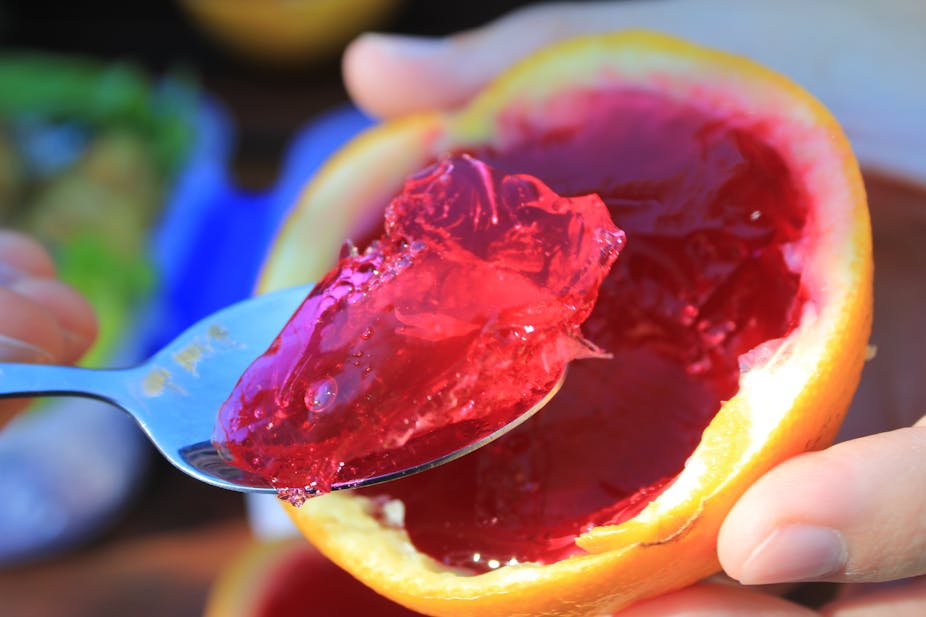New research shows that a catalyst made from gelatin, the same protein used to make jelly desserts, helps fuel cells be more efficient. This may offer a cheap alternative to the expensive metal-based fuel cells.
In a fuel cell, energy released from a chemical reaction (most commonly hydrogen and oxygen combining to form water) is converted into electricity. Many carmakers like Toyota are racing to find a commercially viable fuel cell. If they are able to, cars of the future will spit out only water, instead of the carbon dioxide, water and other pollutants that today’s fossil fuel powered cars do.
Researchers from the UK, Japan and China, led by Zoe Schnepp at the University of Birmingham, reported their new catalyst in the Journal of Materials Chemistry A. To make the catalyst, they mixed salts of magnesium and iron with gelatin to create a foam. Heating this foam to 800 °C in a process called calcination degrades the gelatin and oxidises the metals, producing a sponge which contains metal nanoparticles (which are a million times smaller than a human hair). Any remaining metal is washed off with acid, leaving behind a porous structure made of carbon.
This porous structure is an advantage for the catalyst. The network of pores and bubbles inside the catalyst provides a very large surface area for chemical reactions to occur. The more places there are for hydrogen and oxygen to react to produce water, the more efficient the catalyst is.
The choice of metal salts proved to be important too. The identity of the metals used determined the size of the pores formed, and thus affected how well the reactions occur. The two metals used react differently during calcination: the magnesium is converted to nanoparticles of magnesium oxide, while the iron bunches together into much larger particles of iron carbide. This meant that the ratio of magnesium to iron can be used to tune the pore size.
During heating iron carbide converts the carbon around it to a thin sheet, which happens to be good for a fuel cell reaction. Nitrogen atoms from the gelatin become embedded in this thin sheet of carbon, and previous results have shown this makes the catalyst even more effective.
When Schnepp compared commercial platinum catalysts with her catalyst, she found they did just as well. Crucially, the new catalyst is also as durable as the platinum ones. Platinum is too expensive to be used for commercial fuel cells. In recent years, there have been many efforts to find a cheaper and better alternative. Schnepp’s catalyst needs cheap gelatin and plentiful metal nitrate salts, making it one of the best alternatives yet.
By exploiting the properties of biological polymers, Schnepp and colleagues have found simple route to a structurally complex and useful material. Simplicity, as Steve Jobs would say, is often the first step to a great product.

